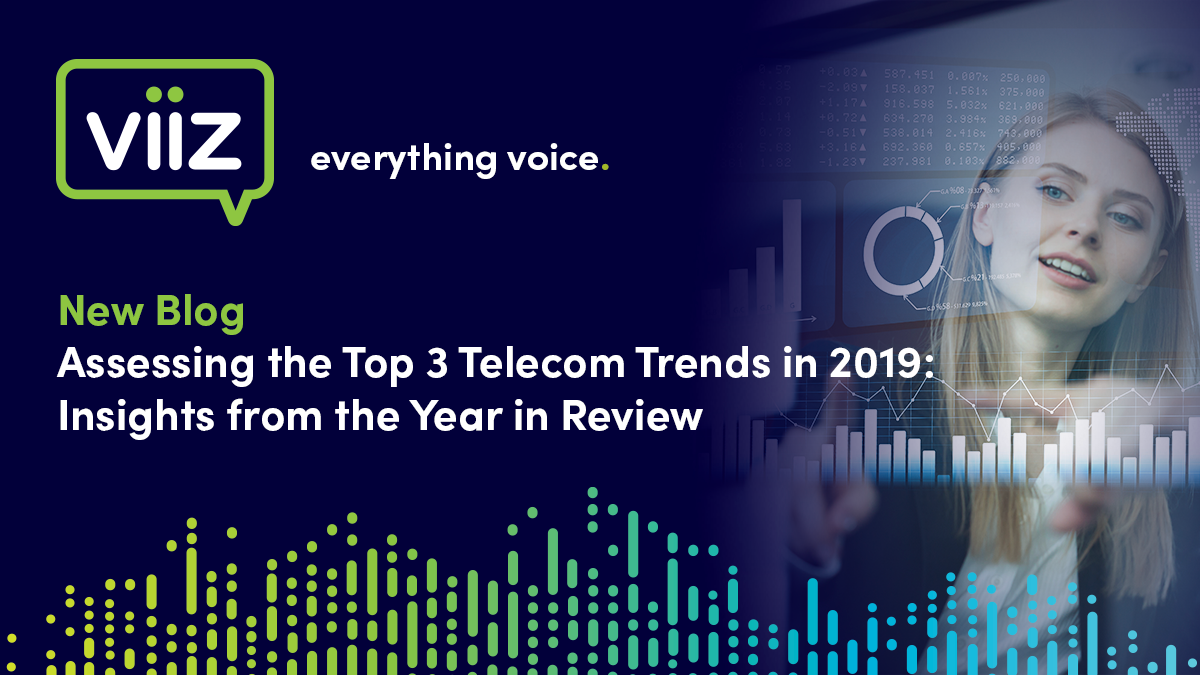Subscribe to the Viiz Blog
Stay informed by receiving blog posts in your inbox.

James MacKenzie
President and CEO
As we get ready to close out 2019, it’s always interesting to take a look back at what industry analysts and advisors thought would be the most important trends that would play out in telecom for the year, and compare their predictions to our experiences. Of particular interest to me are those predictions focused around addressing the business challenges faced in the telecom industry; while new technologies like 5G and IoT represent areas of growth for telcos and cablecos, I’m fascinated by the areas where analysts say more care and attention is needed.
Jarred Brown, Senior Principal at Mastercard Data and Services, authored an article titled Beyond 5G and IoT: The Top Telecom Trends for 2019, which delves into how telcos could or should consider addressing the key challenges in their business. He lists out five trends in this vein, but I’m only going to focus on three here: putting customer engagement first, capturing more of the B2B growth opportunity, and escaping the “race to the bottom” in pricing.
Putting Customer Engagement First
Customer experience is one of the hot-button topics we hear about all the time these days. And with good reason - research from PWC indicates that 75% of American consumers, and 72% of Canadian consumers point to customer experience as being an important factor when making a buying decision.
While Brown focuses on experiential stores and rewards programs as examples of innovations focused on customer experience and engagement in the telecom space, when you get down to the basics, the staff who answer customer calls are at the forefront of the customer experience every day. Yet many telcos and cablecos are struggling with antiquated infrastructure that just doesn’t cut it - it’s well past end-of-life, it doesn’t offer the reliability that they need, and upgrading to a newer platform in-house seems to involve more downtime and agent challenges than can be rationalized.
As the customer experience continues to drive consumer behavior, telcos and cablecos need to remember that the little things, like how a customer’s support call is triaged and handled, has a huge impact on how that customer perceives their brand. How customers expect to engage with customer service is also changing towards omni-channel technologies that include chat/text, video and social media in addition to traditional voice. These changes to how people navigate through today's modern world impact how a customer engages with the traditional call center environment.
Capturing More of the B2B Growth Opportunity
For years, telcos enjoyed a de facto monopoly on building out the national data infrastructure, an infrastructure that then became the backbone for the OTT and digital-only players that have since entered the market and brought increased competition to the space. Simultaneously, telcos have ventured into new markets, using their networks and data points to help consumer-focused businesses better hone in on their target markets with greater accuracy than ever before.
But part and parcel of these B2B growth opportunities, are requirements for support services that customers still need and want - from data listings in on- and off-line directories, through to regulatory requirements like 911 call delivery for emergency calls that egress from their voice network (on- and off-premises). Telcos and cablecos have an opportunity to align more closely with businesses as their needs for network and marketing capacities continue to grow, but they should also remember that these businesses have core legacy telecom requirements that need to be serviced, and consider if and how they are prepared to support those needs.
Escaping the “Race to the Bottom” in Pricing
Unsurprisingly, competition and convergence have exacerbated downward pressure on price. As Brown notes, telcos and cablecos are looking to gain operational efficiencies to remain competitive and profitable - often by leveraging automation and cloud technologies. Another option that bears serious consideration is the outsourcing of the non-strategic services that telcos and cablecos often provide, which require continual investment and reinvestment in technologies and resources. Our customers have seen significant operational benefits from bundling up these services and outsourcing their delivery - from reducing the internal burden of operating and managing services like call centers, operator services, N11 routing, directory assistance and emergency calling, to leveraging value-added customization options, through to the economies of scale that a third-party provider can deliver.
So from my perspective, these top telecom trends identified by Jarred Brown hold as we look back on 2019, even when viewed more broadly. As we’ve experienced over the past year, telcos can address these trends and challenges by not only focusing on the big wins of new fiber networks, IoT offerings and 5G capabilities, but also by taking a pause to examine the small things, the things that perhaps go unnoticed or are not considered strategic, but represent new opportunities to streamline operations and free up resources to focus on core initiatives.
If this resonates with the challenges your organization is facing, reach out - we’d love to share how we’ve helped other businesses address customer engagement, B2B business growth and operational cost efficiencies.